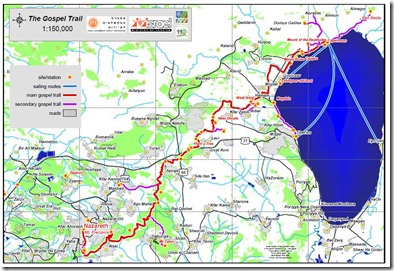Last month Eisenbrauns released a new book that looks fantastic. Unearthing Jerusalem: 150 Years of Archaeological Research in the Holy City has a rich collection of articles authored by those who know the subjects best [with one glaring exception]. I have not read the book, and will not be able to for several months, but I know that some of the readers here will want to get this on their Christmas list. 
The Eisenbrauns website has the publication details, but more helpful than the two-paragraph description is the table of contents. I’ve re-formatted that below for easier reading.
It should be noted that the book is based on a conference held in 2006 and thus those looking for the latest results from excavations will want to check elsewhere.
Frank E. Peters, Where Three Roads Meet: Jewish, Christian, and Muslim Pilgrimage to Jerusalem
Part 1: The History of Research
Shimon Gibson, British Archaeological Work in Jerusalem between 1865 and 1967: An Assessment
Ulrich Hübner, The German Protestant Institute of Archaeology (Deutsches Evangelisches Institut für Altertumswissenschaft des Heiligen Landes)
Joan R. Branham, The American Archaeological Presence in Jerusalem: Through the Gates of the Albright Institute
Dominique Trimbur, The École Biblique et Archéologique Française: A Catholic, French, and Archaeological Institution
Michele Piccirillo, The Archaeology of Jerusalem and the Franciscans of the Studium Biblicum
Ronny Reich, The Israel Exploration Society
Jon Seligman, The Departments of Antiquities and the Israel Antiquities Authority (1918–2006): The Jerusalem Experience
Part 2: From Early Humans to the Iron Age
Ofer Bar-Yosef, Prehistory of the Jerusalem Area
Aren M. Maeir, The Archaeology of Early Jerusalem
Israel Finkelstein, Jerusalem in the Iron Age: Archaeology and Text; Reality and Myth
Part 3: The Roman Period
Joseph Patrich, The Location of the Second Temple and the Layout of its Courts, Gates and Chambers: A New Proposal
Doron Ben-Ami and Yana Tchekhanovets, Has the Adiabene Royal Family “Palace” Been Found in the City of David?
Ronny Reich and Eli Shukron, The Pool of Siloam in Jerusalem of the Late Second Temple Period and Its Surroundings
Zvi Greenhut, A Domestic Quarter from the Second Temple Period on the Lower Slopes of the Central Valley (Tyropoeon)
Donald T. Ariel, Coins from Excavations in the Domestic Quarter of the City of David, Jerusalem
Hillel Geva, On the “New City” of Second Temple Period Jerusalem: The Archaeological Evidence
Jodi Magness, Aelia Capitolina: A Review of Some Current Debates about Hadrianic Jerusalem
Part 4: The Byzantine Period
Oren Gutfeld, The Urban Layout of Byzantine-Period Jerusalem
Leah Di Segni, Epigraphic Finds Reveal New Chapters in the History of the Church of the Holy Sepulchre in the 6th Century
Jon Seligman, The Hinterland of Jerusalem during the Byzantine Period
Part 5: The Early Islamic and Medieval Periods
Gideon Avni, From Hagia Polis to Al-Quds: The Byzantine–Islamic Transition in Jerusalem
Donald Whitcomb, Jerusalem and the Beginnings of the Islamic City
Shlomit Weksler-Bdolah, Early Islamic and Medieval City Walls of Jerusalem in Light of New Discoveries
Mahmoud Hawari, Ayyubid Jerusalem: New Architectural and Archaeological Discoveries
Robert Schick, Mamluk and Ottoman Jerusalem
One last comment: the natural choice for the presentation/article on Iron Age Jerusalem is Gabriel
Barkay. He knows the city and this period far better than Israel Finkelstein and he does not suffer from the biases that make the latter’s work unreliable. Perhaps a logistical reason made Barkay’s participation impossible.
